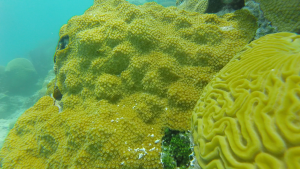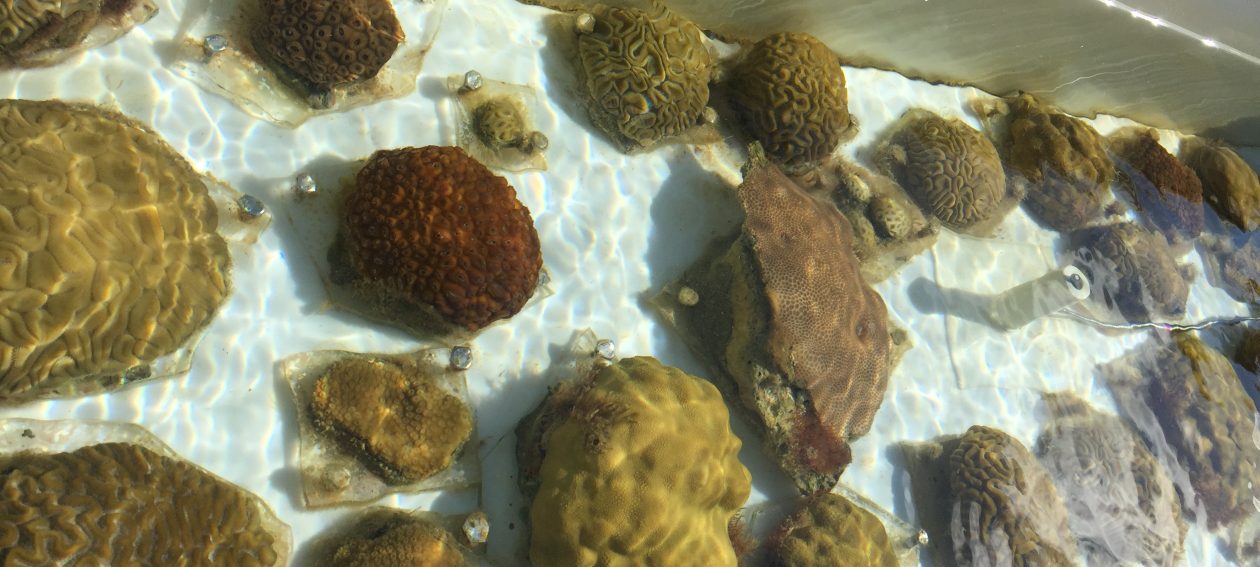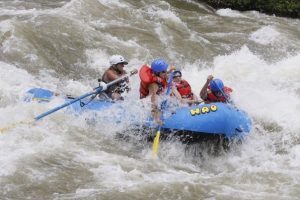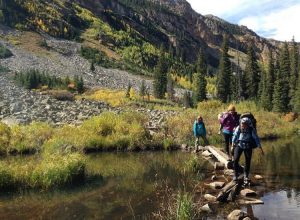Dr. Katelyn Gould
Director of restoration science at Coral Vita
Grand Bahama
Biography:
Originally from Denver, Colorado, I have always been engaged with the natural environment, from the mountains and rivers in the west to the rolling prairies in the east.
Me and the family riding the Arkansas River in 2012, Canon City, CO
Hiking through the Rocky Mountains in 2016, San Isabel National Forest, CO
It wasn’t until I first visited the Pacific Ocean as an 8-year-old that my passion for sharks, most likely from watching Jaws too many times, culminated into a tangible dream of becoming a marine biologist.
Although my passion for fish has never waned, I became captivated by corals and coral reefs. An entire ecosystem created from individual coral polyp animals, essentially minuscule (<10mm) jellyfish living in colonies, that have their own “garden” living inside their tissues, while constantly secreting a calcium carbonate skeleton from its “skin”. This is the stuff of science fiction, yet here it is supporting over 25% of the world’s ocean biomass. 
Caribbean corals: Left: Orbicella franksi with coral polyps extended Right: Diploria labyrinthiformis
Past Research:
My first independent research study was on the effects estrogen has on the reproductive fitness and output of the soft coral Nematostella vectensis. I did this work after graduating from Regis University (Denver, CO) in 2011 when I worked for the Biology department. This would mark my first success at receiving a research grant and also my first experience facing the challenges that come with working on marine life in a laboratory.

Extended tentacles of Nematostella vectensis 2012, Regis University, Denver, CO
Before attending graduate school, I worked as a Lab Manager for Dr. Chris Martin’s fish genetics and ecology lab at the University of North Carolina at Chapel Hill. Here we explored the evolutionary and ecological mechanisms at play in adaptive radiations and sympatric speciation in tropical pupfish and African cichlid populations. I engineered and build three fish aquaria rooms and maintained thousands of fish during my time there.
“Big Boy” Coptodon ejagham from Lake Ejagham, Cameroon, Africa, is an African Cichlid and the mascot of the fish lab. He arrived in a 5-gallon bucket and was the first fishy resident. Here he is chasing a laser pointer at University of North Carolina at Chapel Hill, 2017
GRADUATE WORK:
I explore the genetic and ecological mechanisms controlling reef-building corals’ potential to adapt and acclimatize to increasing sea temperatures and characterize thermal tolerances and sensitivities in various coral species. I collaborate with coral restoration practitioners to enhance restoration efforts as well as investigate stress-mediating interventions to enhance restoration and increase coral persistence in coral nurseries and transplantation sites.
Coral thermal adaptation:
My first introduction to coral thermal tolerances was in 2017 when I collaborated with a team of scientists, Drs. John Bruno (UNC), Hollie Putnam (URI), Nyssa Silbiger (CSUN) and Gretchen Goodbody-Gringley (BIOS) constructing thermal performance curves for the reef-building coral Orbicella franksi.
Collecting algae in Bermuda for a benthic ecology survey 2017
Novel restoration techniques to reduce bleaching severity:
In 2018 I started collaborating with the Coral Restoration Foundation in Key Largo, FL. I tested novel stress-mitigation techniques in the laboratory to reduce bleaching severity in the staghorn coral, Acropora cervicornis. See research-musings for more…
In 2019 I debuted my first published paper that characterized thermal performance in 4 Bermudian coral species across a depth gradient. This was my first experience working with mesophotic corals, and I have been hooked ever since.
In 2021, I completed what was supposed to be a year-long restoration study in the Florida Keys, however with covid that turned into a 2-year unforgettable research experience. After 5 trips driving between the Florida Keys from North Carolina, I finished my final project investigating restoration success in Orbicella annularis across four reef sites. These corals were monitored, tracked, and using a portable non-destructive respirometry device measured metabolic changes throughout the years. I ended this project with a bang and had the opportunity to then transplant them onto the reef to their forever home.



